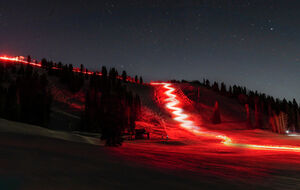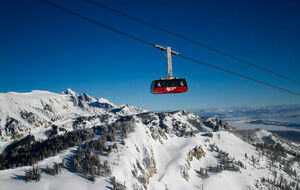The Importance of Skiing With a Helmet
The Importance of Skiing With a Helmet
The National Ski Areas Association reported that during the 2009 – 2010 season, an estimated 59.8 million people enjoyed skiing or snowboarding on slopes around the world. However, these sports are not without possible hazards, and falling commonly occurs whether you’re a novice or an experienced athlete. The speed at which skiers and snowboarders travel increases the force of impact. Statistics indicate that 25 skiers and 13 snowboarders were killed during that season. Another 16 skiers and 23 snowboarders received serious injuries. When deciding upon ski equipment rental options, safety gear remains essential.
Prevalence of Head Injuries
Head injuries are particularly common in winter sports. Skiers are at risk for receiving injuries to the side of the head. Boarders often fall backwards, making the back of the head vulnerable. Traveling downward at a high rate of speed may lead to fatal results if colliding with an inanimate object, so helmets are a crucial part of safety equipment.
Helmets cannot completely ensure that a head injury will not occur, but most are designed and rated to prevent injury when traveling at speeds of less than 15 miles per hour. As skiing or snowboarding down slopes often means traveling at speeds ranging between 25 and 40 miles per hour, it becomes apparent that the possibility for incurring a head injury is a reality. However, by absorbing some of the force behind an impact, a helmet minimizes the likelihood of suffering a serious head injury by 20 to 50 percent.
Some skiers may view helmets as restrictive or not fashionable. Only approximately 48 percent of 18-to-24-year-olds feel the protective device is necessary. However, given the well-publicized fatal accidents involving Michael Kennedy, Natasha Richardson, Sonny Bono and the reported accidents suffered by professional skiers and boarders, more and more winter sports enthusiasts have made the wise decision to enter ski equipment rental facilities with the mindset of including helmets as a part of necessary gear. Studies suggest that more than 60 percent of boarders and skiers wear helmets. Eighty to 90 percent of children wear helmets.
Choosing a Ski Helmet
A properly fitted helmet should feel snug but not uncomfortably tight. Helmets that move back and forth are too loose. If you feel the helmet shift when shaking your head, adjust the sizing mechanisms, find one with thicker pads or choose a smaller size. Rental helmets are always the newest and safest on the market, so make sure during your next ski vacation that you request a helmet rental from the company you are working with. Ensure that no gaps exist between your head and the inside of the device. Try to move the helmet upward from the front and back. Tighten the straps if necessary. Helmets should also come low enough in the front to provide forehead protection, which means a maximum of 1 inch above the eyebrows.
Helmet Regulations
By 2011, 46 out of 50 states in the U.S. required motorcycle riders to wear helmets. Bicycle helmets are required in 37 states. These mandates did not previously apply to winter sports, but in 2011, New Jersey governor Chris Christie signed legislation requiring that anyone under the age of 18 must wear a helmet while on the slopes. The parents of skiers found not in compliance face fines of $25 for a first offense and up to $100 for future offenses. Other states may also initiate and enforce regulations.


